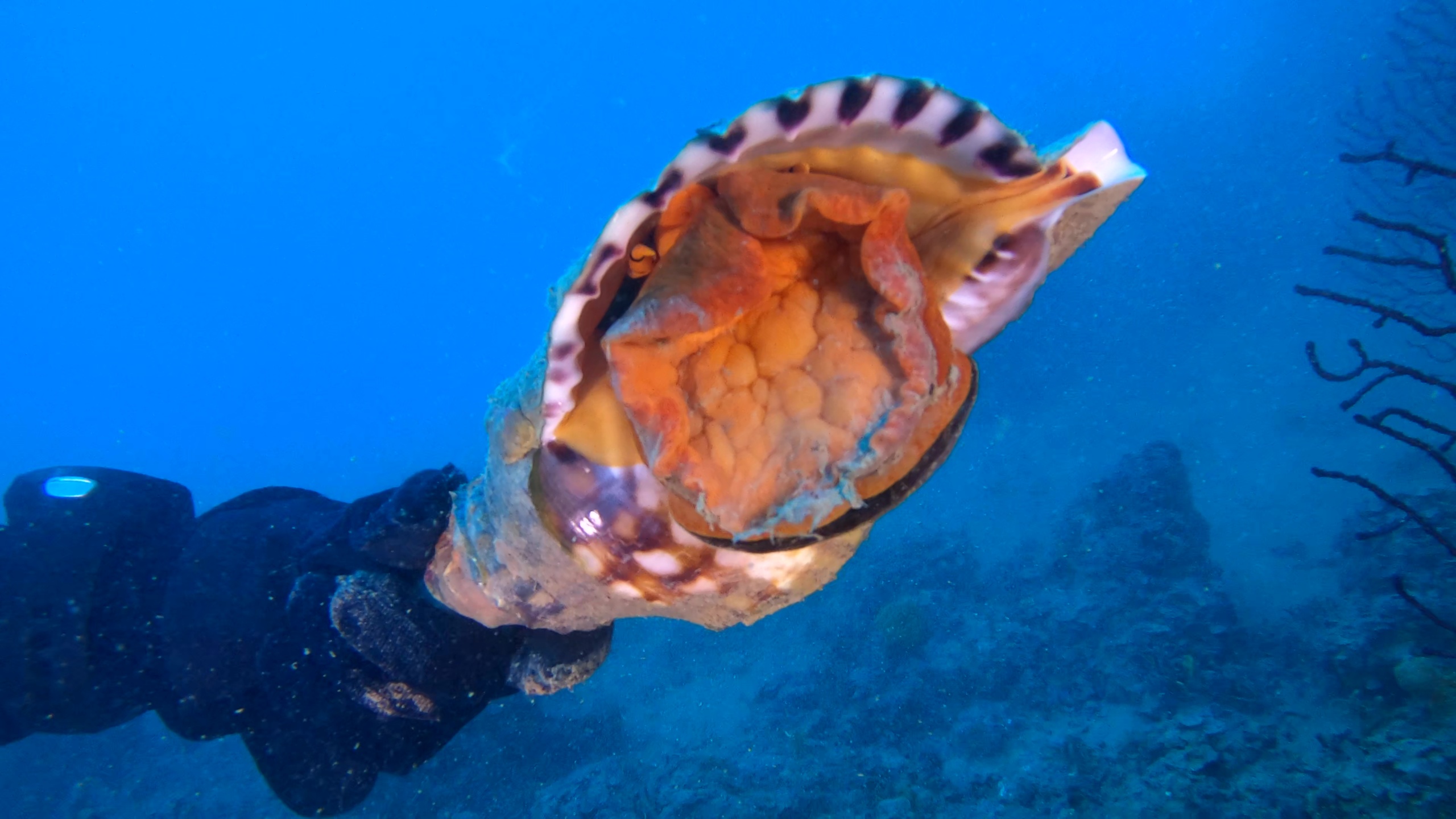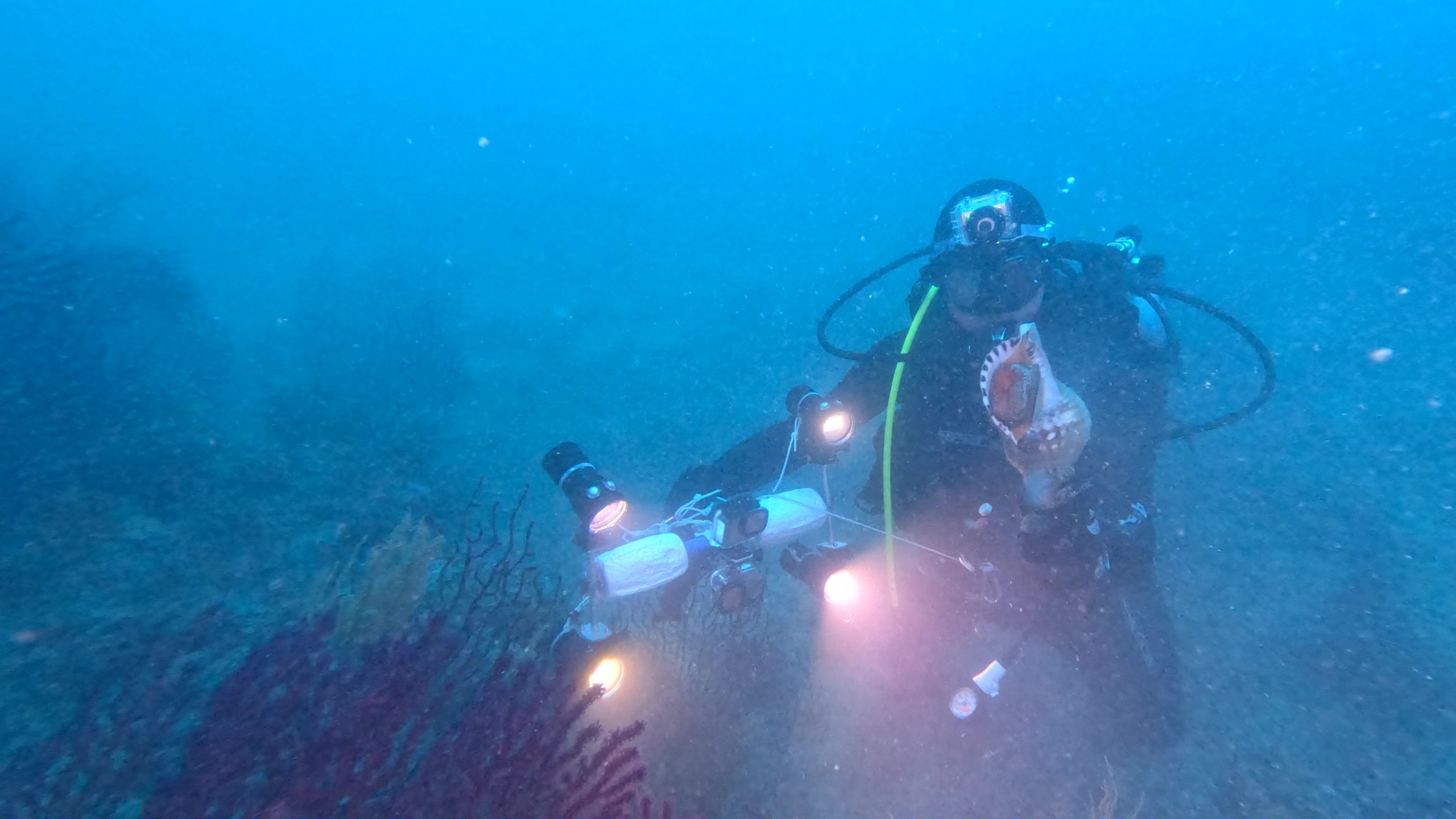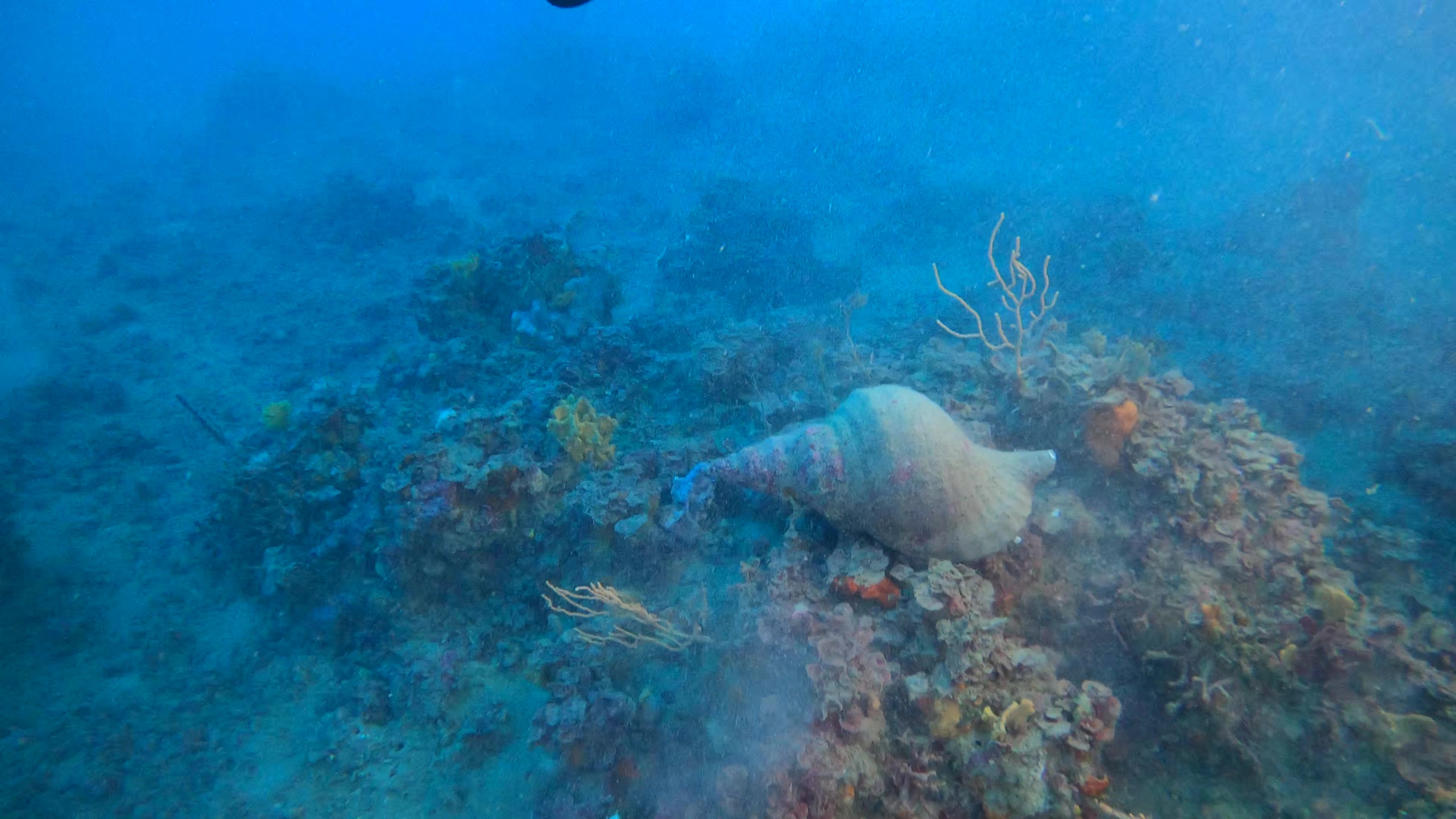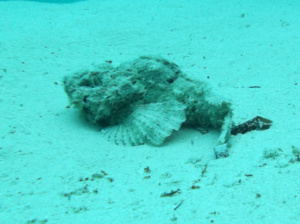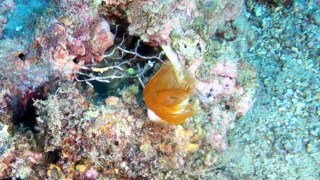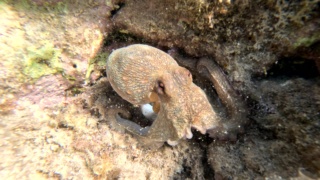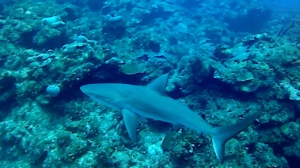Meeting Giant triton – Charonia tritonis always arouses a strong emotion, both because it is the largest mollusk in the Mediterranean Sea and because it is increasingly rare. Fortunately here on intotheblue.it we have published several videos of this splendid shell so despite all the alarms we give about the health of our sea, when we encounter the Triton the hope that the sea can really regenerate itself returns to be present.
In this beautiful dive we are on a coral seabed which varies from 50 to 52 meters deep and we see other species at risk such as the red Gorgonian, Paramuricea clavata, the Gorgone starfish or Astrospartus symbiotically linked to the Paramuricea, the Mediterranean lobster, Palinurus Elephas that in the video we even see her sharing the den with a Murena helena. These signs should give us hope for the best regarding biodiversity and the health of this fragile ecosystem but we continue to believe that parks and marine protected areas are increasingly necessary and urgent.
Giant triton – Charonia tritonis(Linnaeus, 1758) is a gastropod mollusc belonging to the Charoniidae family, much sought after for its shell, which can reach considerable dimensions.
Distribution and habitat
Widespread in the Pacific and Indian regions. It is also present in the Mediterranean in the Sicilian Channel, but also in the Upper Tyrrhenian and Lower Ligurian Sea at depths between 20 and 50 m.
Eating habits
The Newt is one of the few animals to feed on the crown-of-thorns starfish, Acanthaster planci. These starfish feed on corals and have practically no predators, except the Triton. They have a destructive capacity, in fact it is thought that the crown-of-thorns starfish is responsible for the disappearance of corals and coral areas in the Great Barrier Reef of Australia and in the western Pacific reefs. The newt is capable of tearing the starfish apart with its tongue-like radula.
https://en.wikipedia.org/wiki/Charonia_tritonis
https://it.wikipedia.org/wiki/Charonia_tritonis
Gallery
 English
English Italiano
Italiano
